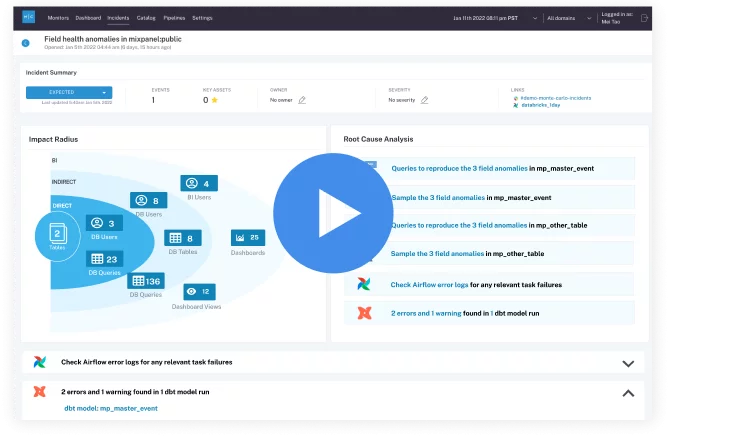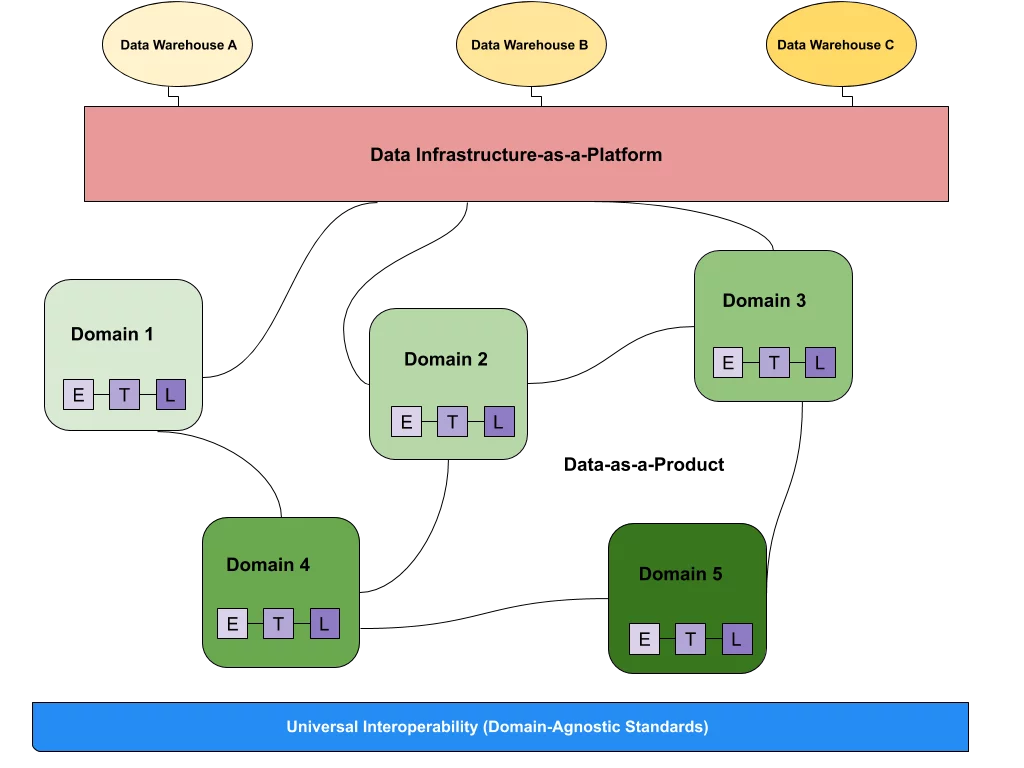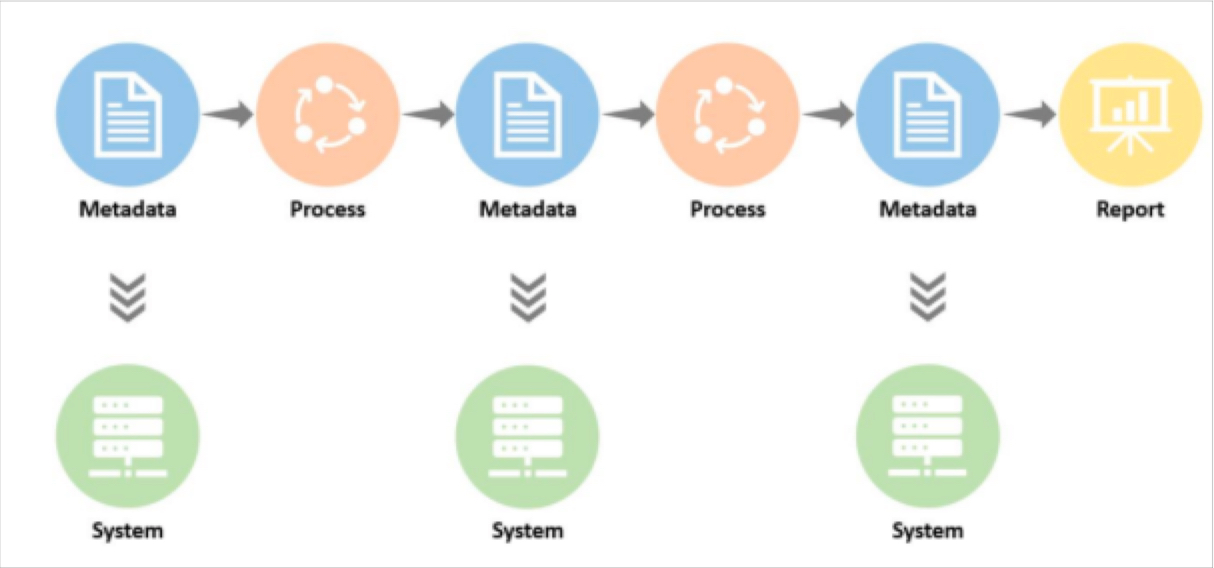3 Steps to AI-Ready Data

If it seems like literally everyone and their CEO wants to build GenAI products, you’re absolutely right. In our latest survey on the state of data reliability, nearly 100% of data leaders said they feel pressure from their own leadership to implement a GenAI strategy or deliver GenAI products.
But data leaders understand something that’s often lost on most C-Suites: GenAI products are only as valuable as the first-party data that powers it—and that data is only as valuable as it is reliable.
As Lior Solomon, VP of Data at Drata, so accurately expressed, “Data is the lifeblood of all AI — without secure, compliant, and reliable data, enterprise initiatives will fail before they get off the ground.”
And the uncomfortable truth is…most businesses just aren’t there yet.
Listen, this is hard stuff, and it takes time to get it right. But just because it’s hard doesn’t mean there aren’t a few best practices that can soften up that challenge. In this article, I’ll propose a playbook you can deploy to get your team aligned, your data ready, and your stakeholders on the same page.
Let’s jump in.
Table of Contents
The playbook for AI-ready data
Before we can take a swim in the AI soup, we need to be able to see where we’re going. Preparing enterprise-ready data for GenAI use cases requires creating a map of our data that is complete, easy to understand, and accurate. In other words, to be successful in the GenAI arms race (or with any data product for that matter) we need our data to reflect the world around us.
And at the risk of sounding indelicate… That’s easier said than done.
At a basic level, we’re talking about tracing the path your data will take from its source (think single source of truth) through to the RAG/AI pipelines that will leverage it and the users and stakeholders who will benefit from it.
The key to GenAI-ready data as I see it is three-fold:
- Migrate to the cloud and create a single source of truth
- Infuse semantic meaning into your dataset
- Ensure data quality and enact governance policies
In a moment I’ll go into each of these in more detail, but before we do that, I want to give some context.
As you go through this playbook, don’t try and conceptualize how these practices will apply to your entire data environment. Try to consider a few potential GenAI use-cases that require more limited datasets to start. Nail down your process with the lowest hanging fruit, and then expand to larger and more complex use cases as your AI motion matures
Now, let’s dive in!
Step 1: Get to the cloud
If your data stack isn’t already on the cloud — whether that’s Snowflake, Databricks, or some other warehouse/lake/lakehouse solution — the time to get there was yesterday.
While some legacy data platforms may have been more or less sustainable in specific enterprise use cases, the requirements to remain competitive in the modern GenAI landscape have rendered that path all but impossible.
That’s because major players in the cloud data infrastructure race are now leading the charge in AI infrastructure as well, delivering some of the most powerful, extensible, and scalable tooling for enterprise data teams.
The Snowflake and Databricks announcements this summer at their respective conferences were all about making it easier to move and activate your for AI (think catalogs, automated pipelines, open-formats, etc) and one of the chief functions of the newly launched dbt Copilot is to help users build semantic models and generate useful documentation faster.
As dbt Labs founder and CEO Tristan Handy wrote in his reflection on the 2024 “summit season”, “Data gravity and security / governance will be the biggest differentiator in enterprise AI, and model quality will matter somewhat less.”
Yes, migrating to the cloud is an investment. No question. It means dealing with a lot of tech debt and rearchitecting pipelines and permissions. It means reimagining workflows and processes. And all that change can put business-critical operations at risk in the interim.
From deployment hurdles to complex enablement timelines, cloud migrations are no cake walk.
But we have to ask the obvious question—what’s the risk if you don’t?
Few serious enterprise teams can scalably activate their data for AI use-cases without a modern, cloud-based data stack. So, if there was ever a time to get that cloud budget approved—and those legal hurdles hurdled—this is it.
Step 2: Infuse your data with semantic meaning
Once your data is in the cloud, the next step to AI-ready data is to make it meaningful. This isn’t just about making your data available — it’s about making it understandable, both to your team and to the AI models that will leverage it.
As data leader Surekha Durvasula told me recently, “Your LLM product is only as good as the data that goes into training [your product]…Oftentimes, I don’t think data teams are taking data reliability, context, and semantics seriously enough.”
Without semantics, your cloud-based data is just symbols on a spreadsheet — raw tables and fields without context, meaning, or clear relationships. Building AI applications on top of this kind of data is like trying to have a conversation with your neighbor’s parrot—it can spit out a few words, but they probably won’t be appropriate.
Infusing semantic meaning involves going beyond simply storing your data. It means defining that data by documenting relationships between creator and context (like customers and their orders), establishing clear business definitions (what exactly counts as an “active user”?), and maintaining metadata about data freshness, quality, and lineage (more on that in a moment). And in the case of AI, semantic meaning enables your AI to make accurate contextual connections during retrieval augmented generation (RAG) and fine-tuning.
Think of it like this: if you want your customer service chatbot to deliver more value than an FAQ page, it needs to know more than an FAQ page.
Identifying that “UserID 12345 has OrderID 67890,” is helpful. Identifying that “frequent flyer Mark is in the top 10% for individual tickets sales and recently experienced a flight delay” is powerful. And that kind of rich context only comes from properly modeled data with clear semantic meaning.
Tools like in-platform catalogs or dbt’s aforementioned Copilot can all make it easier to derive value from your data by making it discoverable, understandable, or more functional for a given use-case.
Step 3: Prioritize data quality & governance
Of course, after all that work, deploying the right tooling and defining the perfect semantic modeling will only ever be as helpful as your data is reliable.
Even outside of complex RAG architectures—which often rely on dynamic, up-to-the-minute data—your data is going to break. And the more complex your pipelines become, the more common that’s going to be.
Traditional data quality solutions lack the scalability required to meet the needs of AI. And even when it can tell you what broke, it still can’t tell you where, why, or if it mattered in the first place. That’s why the third step to delivering AI-ready data is implementing a modern AI-ready data quality strategy.
Defining data quality and governance for AI is about more than writing tests or triggering alerts. It’s about creating an effective incident management strategy that’s supported by thoughtfully automated tooling to not only detect data quality issues, but also triage and resolve them faster at scale.
Modern data quality approaches like data observability combine fully automated monitoring and lineage, AI-powered recommendations, data profiling, and root cause analysis into a single centralized solution to help teams not just test their data but manage and improve data quality end-to-end. So, as your pipelines scale to meet the demands of new AI use-cases, a modern data quality approach will ensure that your data quality coverage scales with it.
Data observability solutions have even extended coverage to vector databases like Pinecone as well, a critical component for RAG pipelines in the modern AI stack. In fact, modern data quality approaches have become so integral to the success of AI architecture, that Gartner recently included data observability as a key tool in its graph of technologies required to ensure data quality, enforce data governance policies, and generally make data ready for AI applications.
Implementing the AI-ready data playbook
Hear this: getting your data ready for AI isn’t easy. But if AI is on your team’s near-term horizon—and let’s face it, for most teams, it is—then the right mix of tooling, process, and focused energy can get you there.
Just remember, like all things in life and data, remember to start small. Don’t boil the data lake your first time out. Focus on specific, measurable use cases that require limited data sets and offer the opportunity to track and improve success over time. AI isn’t going anywhere. There will be plenty of time to build your AI CEO in 2026. For now, focus on solidifying the right process firsy—not the ultimate use case.
Need a little inspiration? Here are a few real-life data leaders who are already creating successful AI products with AI-ready data:
- AssuranceIQ created an LLM-based product to score customer conversations
- WHOOP built a reliable GenAI chatbot to support internal users
- CreditKarma uses observability to ensure positive member interactions with LLMs
Ready to learn more about how data observability can get your data ready for enterprise AI? Reach out to the Monte Carlo team.
Our promise: we will show you the product.
 Product demo.
Product demo.  3 Steps to AI-Ready Data
3 Steps to AI-Ready Data  What is a data mesh--and how not to mesh it up
What is a data mesh--and how not to mesh it up  The ULTIMATE Guide To Data Lineage
The ULTIMATE Guide To Data Lineage 





